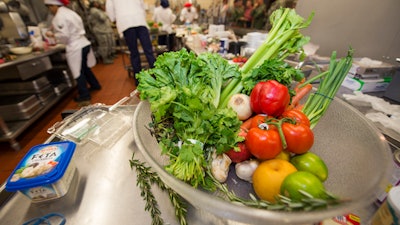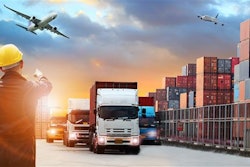
Today, consumers demand quick and easy access to food products. Consumers also want food to be sustainably packaged, ethically sourced and processed in an environmentally friendly manner.
As the public becomes increasingly invested in sustainability, the food industry must adopt new standards to attract customers and align with environmental, social and corporate governance (ESG) initiatives. S2gventures reports that as the world works to make food systems more sustainable, the rise of ESG will help digitize farms, factories and restaurants as organizations look to technology to streamline processes.
As focus on food product origin and the environmental impacts of production practices intensifies, traceability of shipped assets throughout the supply chain has become a necessity. Once stymied by outdated operating models, the food services industry is now using technology to lessen environmental impact and collect asset data in real time. This not only provides the analytics needed to ensure ESG commitments are met but allows companies to accurately track assets amid supply chain disruptions.
Improving asset tracking
The Internet of Things (IoT) consists of billions of physical devices connected to the internet, which constantly collect and transmit data. Using IoT-enabled sensors allows companies to track assets through the supply chain from the time they leave a farm or warehouse to their location on a store shelf.
This is a game-changer for stores receiving fresh produce from distant locations, for example. IoT sensors monitor environmental conditions to alert administrators of temperature changes during transit as well as distance traveled to ensure food is properly preserved and therefore safe to eat.
Multiple technology options can be used to provide connectivity to these sensors. Cellular networks like Wi-Fi and BLE are high bandwidth and can transmit large amounts of data, but are limited in range and therefore typically used to support land-based activities. Low power, wide area networks (LPWANs), however, are low bandwidth and can transmit data across much greater distances.
LPWANs address current deficiencies of cellular technologies via providing reliably secure, long distance connections that make accurate asset tracking a reality. This ultimately mitigates supply chain challenges while optimizing workflows and reducing costs. Utilizing IoT, the food industry can track and trace products with IoT-enabled sensors on land, sea and in the sky.
Land
Food services is a highly time-sensitive industry. When shipping and receiving fresh produce and chilled or frozen items, quality must remain intact throughout the shipping process. LPWAN sensors transmit small amounts of data at regular intervals, whereas GPS devices utilize significant energy to continuously track and transmit location data. Because geolocation occurs in the cloud rather than on the sensor itself, LPWAN sensors are ultra-low power and allow real-time tracking of physical assets to determine temperature shifts, asset location and more. With a cloud-connected sensor, users can receive real-time data at a lower cost while also benefitting from longer battery life and flexible deployment options. With GPS-free tracking, companies reduce power consumption, allowing the implementation of lower cost solutions throughout the entire transportation process.
Because long range, low-power sensors operate on a low bandwidth, they have the ability to penetrate dense building materials, which is crucial for cold chain asset tracking. Signals must be transmitted through refrigeration infrastructure in cellars or cooling chambers in order to prevent potential disturbances in quality control.
Sea
According to the USDA, the United States imported roughly 15% of its food supply in 2021. To help meet consumer demands amid supply chain shortages, forecasts predict that this percentage will remain high in 2022.
Higher import rates mean a larger number of cargo ships traverse our oceans. Long-range sensors have the range capabilities to accurately track assets in even the most remote areas. As supply chain delays increase freight transit times, food services can expect assets to remain on a ship for anywhere from 20-45 days at a time. Long-range, low-power sensors are able to provide real time data and track shipments for lengthy periods at sea given their 10-to 15-year battery life.
Sky
Air cargo is the most suitable method to ship perishable foods, as air transit ensures faster delivery times. In order to track assets shipped via air, satellite and terrestrial networks work jointly to reach locations with little to no access to traditional connectivity options. By stitching these networks together, satellite companies are able to create highly integrated tracking solutions to seamlessly monitor assets as they move around the globe.
Low-cost, low-power satellite connectivity can enable two-way communications to and from satellites in low earth orbit (LEO). This means food services can track shipments on a global level to ensure quality and freshness are maintained.
Ensuring food quality in a volatile supply chain
The fast-paced nature of the foodservice industry requires companies to remain agile, especially in today’s environment, which involves significant and near constant supply chain disruption. Connected sensors can help companies cost effectively track and determine asset quality in the supply chain to optimize purchasing, ensuring that consumers have access to safe, high-quality food.




















